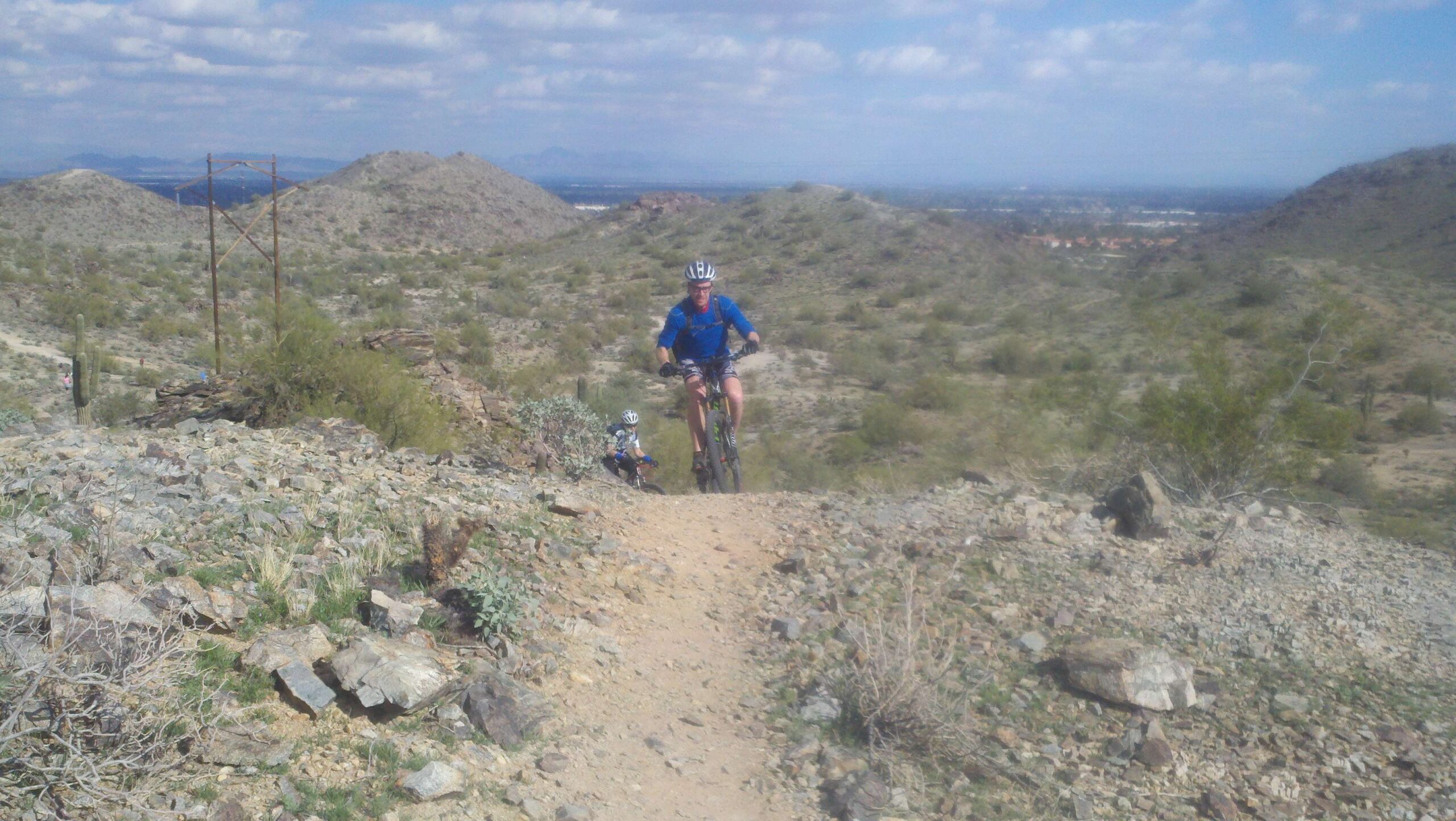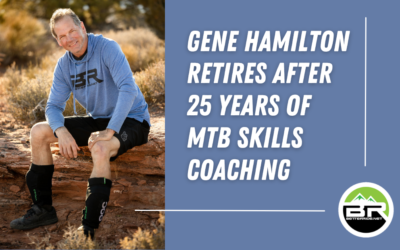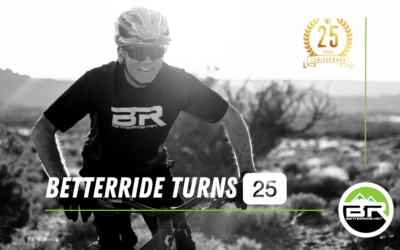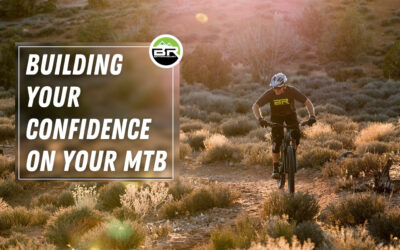As you probably know, I love mountain biking but mountain biking isn’t all good, it can be bad for you. I am not talking about crashing (which is definitely bad for you) but simply riding mountain bikes. Mountain biking, like many sports, can be PART of a very healthy lifestyle. I stress the word “part” because mountain biking should not be your only form of exercise and you need to take care of its ill effects.
This is multiplied if you spend the bulk of your now riding time sitting down! Sitting with poor posture can really exacerbate and even cause major back trouble.
The idea for this article came when I saw two very fit looking road cyclists get off their bike and then hobble to the door. They could barely walk! They were hunched over, stiff and very wobbly! Luckily, because mountain bikers stand, absorb shock and are more dynamic than road cyclists (who often stay in the same hunched over position for hours) mountain biking isn’t as bad a road cycling but it still can lead to imbalances in our body. Few sports work all muscles, ligaments, and tendons equally which is one of the reasons “cross-training” is popular in most sports.
If you like to mountain bike as much as I do don’t forget to mix things up every week! The best thing I have discovered to help me stay fit, healthy and balanced is yoga. A structured weight training program with mobility exercises and self-massage/myofascial release (foam and lacrosse ball rolling) is also a great compliment to my mountain biking. Weight training and yoga are also great mental breaks from mountain biking (which due to the concentration needed to ride single track is very mentally stressful).
Why strength training for mountain biking?
- Mountain biking requires a stable core and a strong lower back, yet riding really doesn’t build a stable core and a strong lower back. It takes work to build a stable core and a strong lower back and achieving both will give you more power on your bike, as well as more control and greatly decrease your chance of injury!
- Mountain biking is asymmetrical exercise when standing and coasting all riders have a foot that they prefer to put forward and a preferred trailing foot. This works each leg’s muscles quite differently and twists your hips. A good exercise like Bulgarian Split Squats which works each leg separately can help rebalance and realign you!
- Consult a qualified trainer to help with finding the correct exercises and executing them correctly, incorrect form while lifting weights can cause more harm than good.
Why self-massage/myofascial release (foam and lacrosse ball rolling) for mountain bikers?
- Mountain biking can really tighten us up! Short tight hamstrings, tight IT bands, tight hips, tight chest, neck, and back are all symptoms of mountain biking, no matter how fit you are. Foam and lacrosse ball rolling are great forms of self-massage and can really loosen you up! I would have had to of stopped riding years ago if I had not discovered the benefits of rolling.
- Once you buy the roller and the lacrosse ball it is free! It just takes time and some uncomfortable work but it pays off my opening you up for peak performance (or, often in my case, simply allows me to ride!).
- Not familiar with self-massage/myofascial release foam rolling or using a lacrosse ball, do a quick google search, there are probably 100 books on the subject as well as hundreds of youtube videos and free articles on the how and why of it. Or talk with your trainer, physical therapist or yoga instructor.
Why yoga for mountain bikers?
- Yoga helps your posture, your breathing, your mobility, your focus and helps calm you.
- Yoga really helps with your body awareness, proprioception, and balance which many of my students struggle with as did I as pro snowboarder and in my early days as a professional mountain biker.
- As a mountain biker, who also lifts weights I get plenty of “yang” my favorite form of yoga is called “yin” yoga and it really opens up your body my holding poses for one to five minutes at a time.
- Yoga done poorly can really mess you up, especially if you like to “push” things. Take classes from qualified instructors and make sure you aren’t “cheating”. The goal isn’t to force yourself into a position, the goal is to gently open up your body.
I find the more yoga I do the better I ride (because I breathe better, have better focus and have greater effective strength and flexibility) and the more I enjoy and look forward to riding (my back doesn’t hurt, the day off from riding made me miss riding). The same goes for strength training and self-massage. With warm weather on the way and great trails beckoning you to ride, it is hard to take a break and do something else, but if you force yourself to be more balanced in how you exercise and recover you will have more fun on the trail in the long run.
In short, balance your riding with other athletic pursuits to be healthier, happier, faster and have more fun!
Yoga, self-massage/myofascial release, and weight training are my favorite forms of exercise to balance with my riding, what others forms of exercise do you do to compliment your riding? What do you like about it and how does help you? Please comment below.
As always, feel free to share this article with anyone you feel could benefit from it.
If you are as obsessed with mountain biking as I am please read/re-read this article:
Stop Riding Your Bike So Much! (Mountain, Road, BMX, Dirt Jump)





Great article Gene! I can’t agree more about yoga. It has helped make me a stronger rider. From focus and strength to breathing and stamina. I usually do bikram but have been looking to do less intense, maybe I should try yin.
Thanks Chris! Yes, check out yin yoga, it’s the opposite of Bikram, slow and meditative.
Sounds like what I need! I have to say, that following your post thru the years has also made me a better rider. Thanks again Gene, keep’em coming!
Absolutely spot on , as a physical therapist i cant agree more . Yoga and self stretching/ strengthening of antigravity muscles will balance things out nicely. True Myofascial release tho is really about very gentle sustained holding of fascial tissue of the body until a release occurs naturally amd has an all encompassing body mind and soul releasing of trauma effect . ( john barnes myofascial release) which is different from soft tissue mobilization as in foam rolling etc . Great article and just love MTB …
Thanks Gill! I’m no expert at myofascial release, I’ve taken 6-8 classes that were called myofascial classes and most involved using tennis balls and/or yoga blocks. I’m guessing they were incorrectly named.
Thanks Gene, you write a lot of good articles and this was one of your best!
You’re welcome, Rich! Thanks for letting me know you liked it.
I did yoga for 5 years but found pilates was much more helpful. Pilates not only involves stretching but provides much needed abdomen, lower back, and hip strengthening. The year I won a hill climb I had been doing pilates consistently. Yoga is often a lot of static postures that don’t translate well to real-world benefits (though there are a lot of mental benefits to it). Pilates is a more dynamic form of conditioning that really changes your posture. So now I do pilates and stretching but don’t waste my time with yoga. I also do a lot of weight training. To me, cycling is about 1/3 of my fitness activities. It is my favorite, but as a cyclist of 20+ years I know the downside of riding all the time.